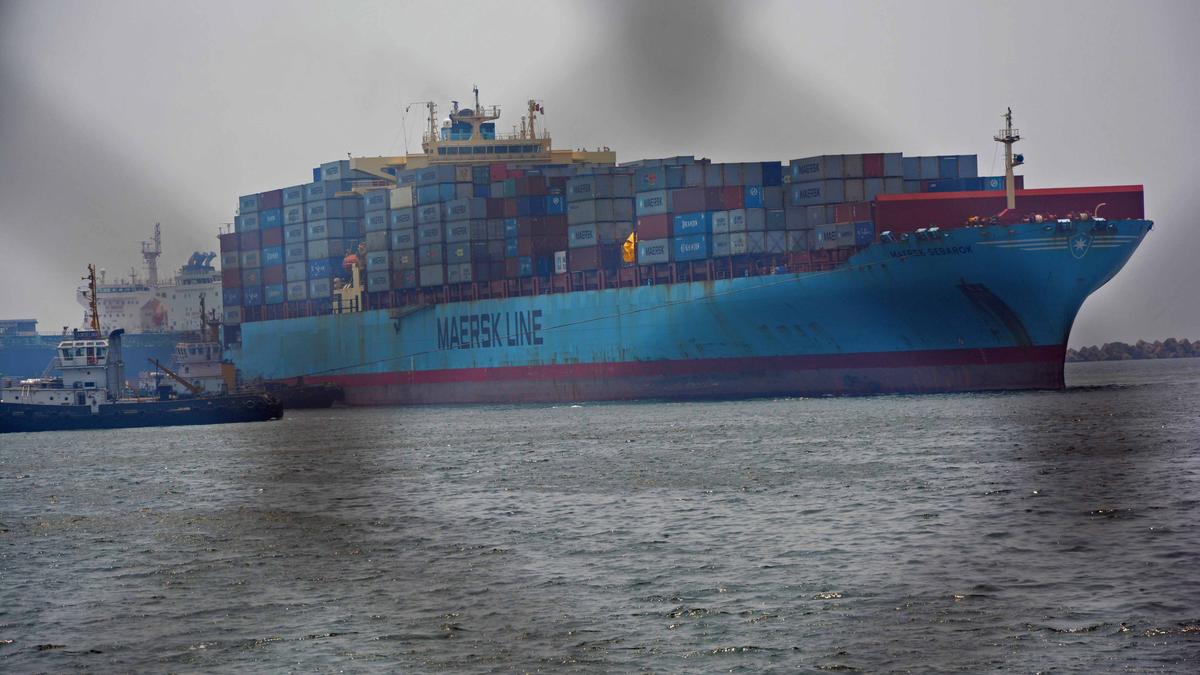Global shipping major Maersk estimates an industry wide capacity loss of 15-20% in the Far East to North Europe and Mediterranean markets, essentially between Asia and Europe, during the second quarter of this financial year. This is due to the Red Sea crisis, which it said has intensified over the last few months.
“To safeguard our crew, vessels, and cargo, we are rerouting around the Cape of Good Hope for the foreseeable future. However, the risk zone has expanded, and attacks are reaching further offshore. This has forced our vessels to lengthen their journey further, resulting in additional time and costs to get your cargo to its destination for the time being,” Maersk said in its latest advisory issued on May 6.
Also Read | Can the IMEC address the Red Sea crisis?
The effects of the situation in the Red Sea are widening and continuing to cause industry-wide disruptions, it noted.
Maersk hikes charges
There have been a series of missile and drone attacks on commercial shipping belonging to entities linked to Israel by Houthi rebels from Yemen since the launch of the Israeli offensive in Gaza.
Elaborating on the effects of the Red Sea situation, Maersk said they include bottlenecks and vessel bunching, as well as delays and equipment and capacity shortages. In this regard, Maersk has leased more than 125,000 additional containers.
Watch | The Red Sea churns: India’s economic costs mount
The company has informed customers that they will see relevant surcharges on the latest invoices. “These are to offset the costs of the longer journeys, increased sailing speed, and additional fuel costs. For example, we are currently using 40% more fuel per journey and charter rates are currently three times higher, often fixed for five years,” it stated.
Maersk noted that while the Peak Season Surcharge was reduced recently, it has been increased again to help cover the additional costs due to the changes.
Securing the Red Sea
In response to the escalation in missile and drone attacks from Houthi held areas, U.S. Secretary of Defence Lloyd J. Austin announced the establishment of Operation Prosperity Guardian on December 18. The operation is an “important new multinational security initiative under the umbrella of the Combined Maritime Forces and the leadership of its Task Force 153, which focuses on security in the Red Sea.”

India, though it has not joined the U.S.-led initiative, has stepped up its presence in the North Arabian Sea, Horn of Africa, and Gulf of Aden to provide aid to ships under fire as well as to deal with the rise in Somalian piracy. At the height of the tensions a couple of months back, as many as 12 frontline warships were deployed in the region for maritime security operations.
From mid-December till March 23, as part of Phase-2 of the Indian Navy’s of Operation Sankalp over 5,000 personnel were deployed at sea, over 450 ship days (with over 21 ships deployed). Maritime surveillance aircraft logged 900 hours of flying to address threats in the maritime domain, then Navy Chief, now retired, Adm R. Hari Kumar told the media.






